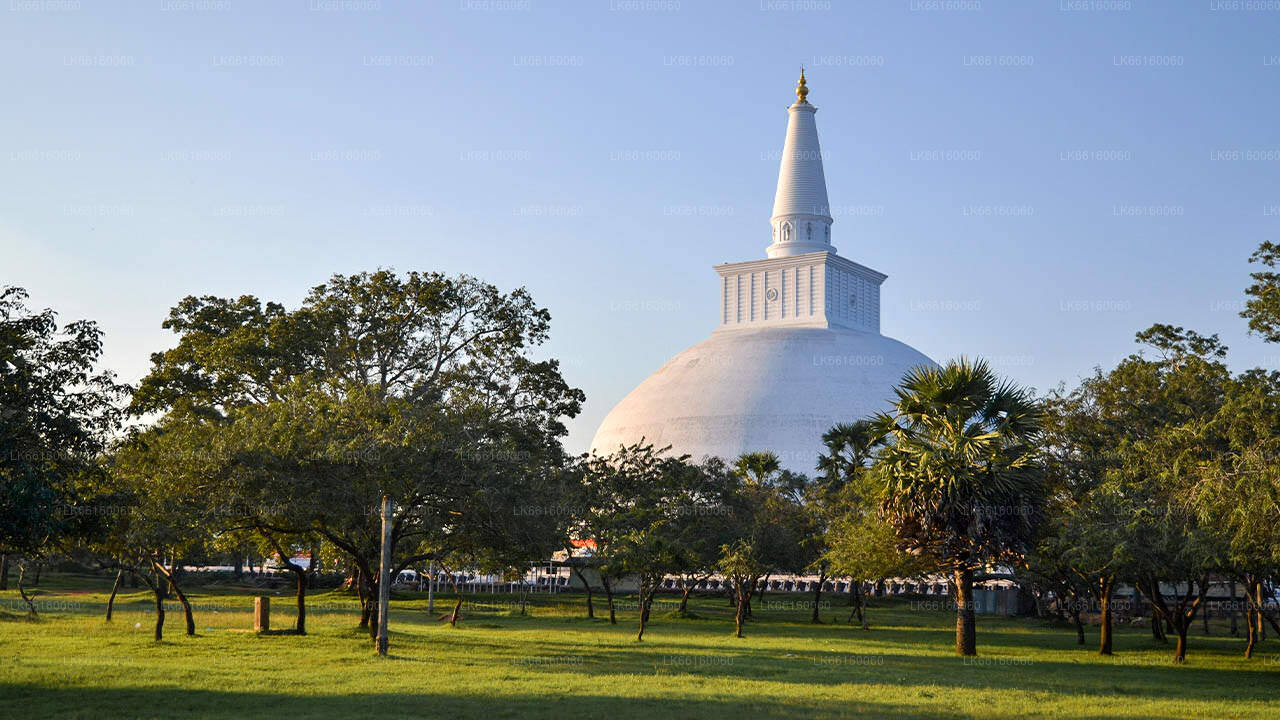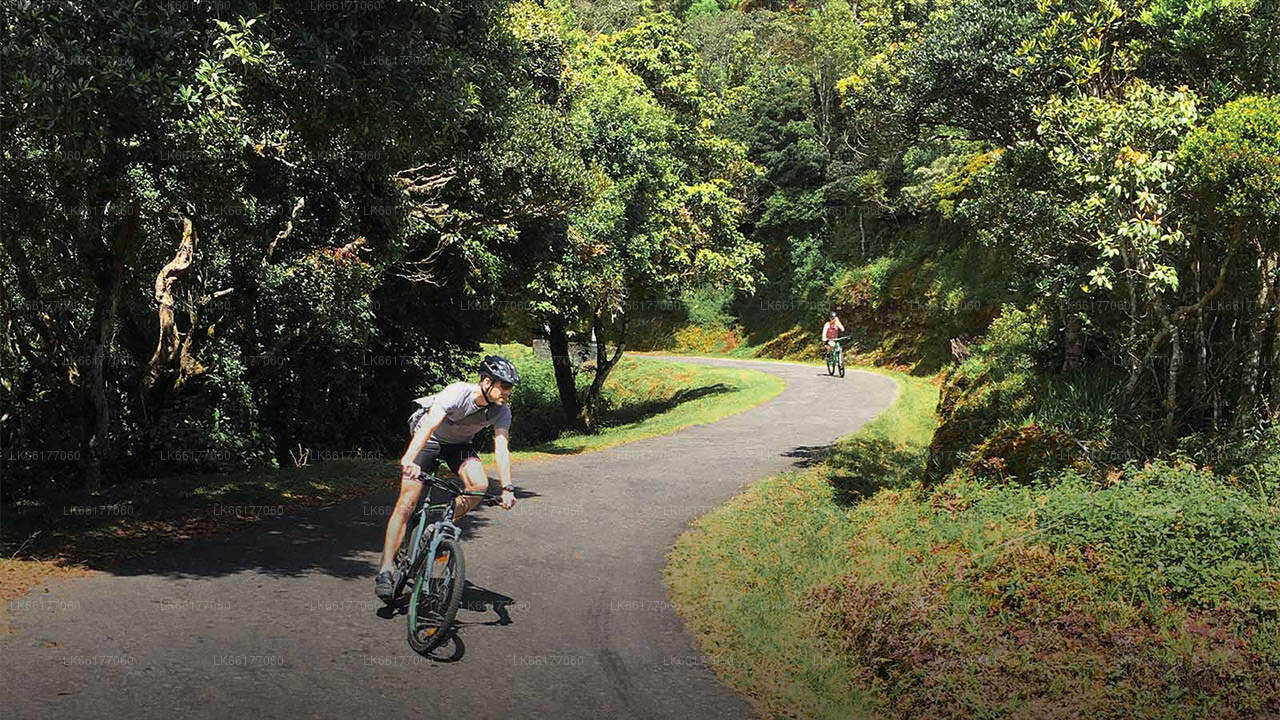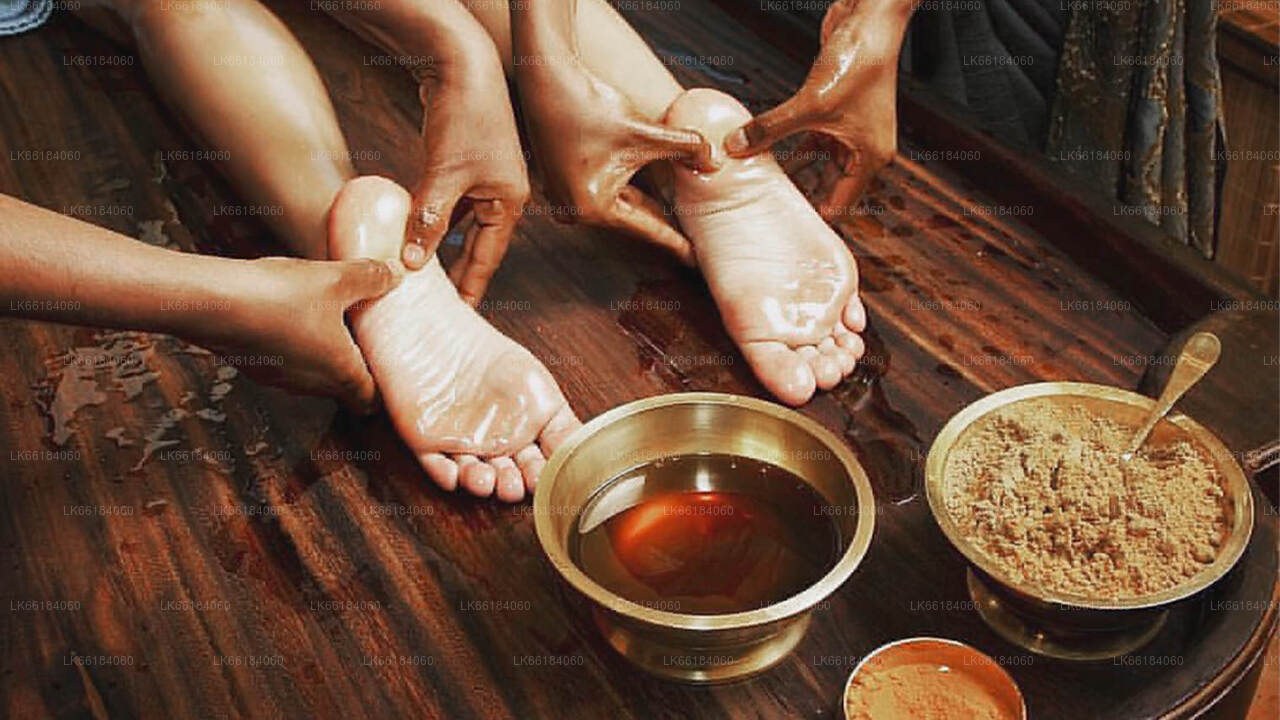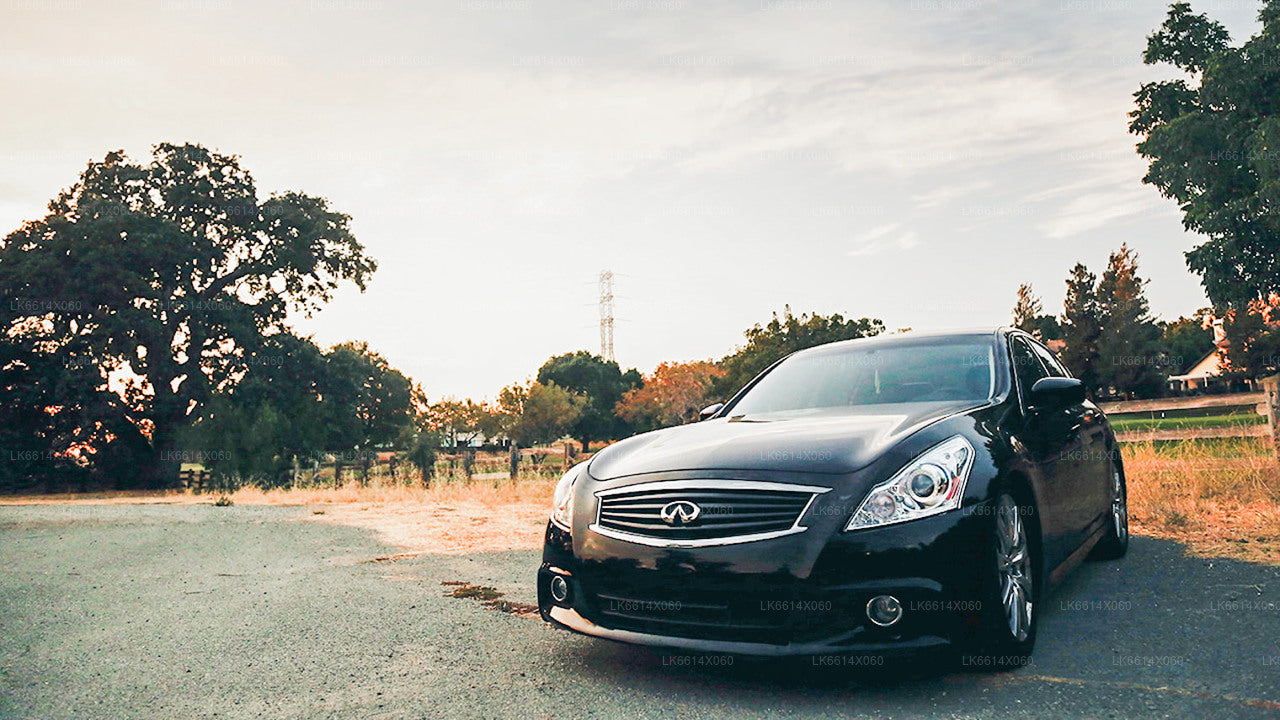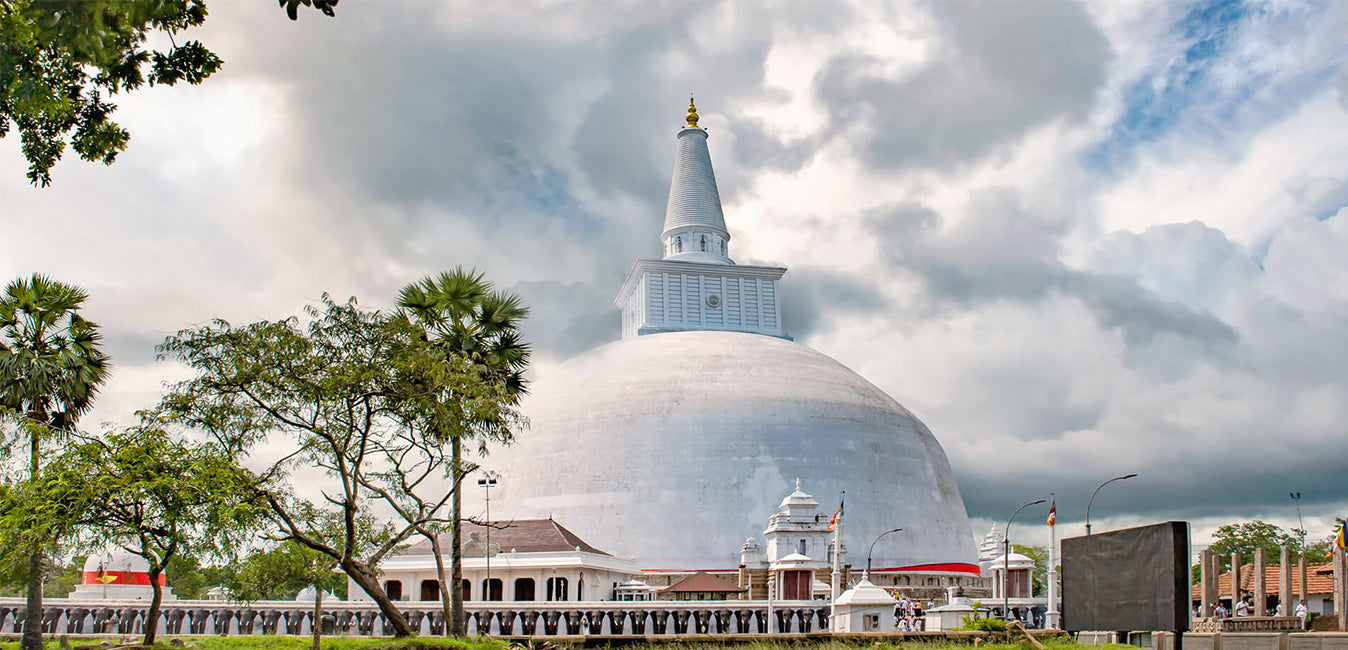
مدينة أنورادهابورة
أنورادهابورة هي إحدى عواصم سريلانكا القديمة، وتشتهر بآثارها المحفوظة جيدًا للحضارة السريلانكية القديمة. تقع المدينة، المدرجة حاليًا على قائمة اليونسكو للتراث العالمي، على بُعد 205 كيلومترات شمال العاصمة الحالية كولومبو في سريلانكا.
Ritigala Archaeological complex
This site is the monastic complex on the lower slopes of Ritigala-kande – the Ritigala Mountain – situated in Sri Lanka’s North Central Province, 25 miles (40 kilometers) southeast of Anuradhapura. These ruins are some of the most distinctive the island has to offer. The Buddhist dagobas (domed relic chambers) and statuary of Anuradhapura and elsewhere are conspicuous by their absence.
The Archeological Site of Ritigala is situated at the eastern slopes of the Ritigala mountain range, the car park and entrance of the excavation site is 20 km to the northwest of Habarana by road. It can be reached from a turn-off at the Habarana-Anuradhapura Road (A11) at a distance of 12 km from Habarana. An 8.5 km along a graveled road leads to the car park of Ritigala at the foot of the mountain range. The distance from Anuradhapura New Town is 55 km, from Polonnaruwa Archeological Site 63 km, from Kandy 113 km, and from Trincomalee 105 km.
Attraction of Ritigala archaeological complex
The reservoir: the perimeter of this huge polygonal reservoir measures 366 meters. it is said to have been dug during the reign of King Pandukabhaya (437-367 BC). Because of its location even before the entrance to the monastery, its use would have been to allow pilgrims and visitors to perform a ritual bath before entering the premises. The reservoir is crossed by a river which supplied it with water. Visitors would walk along it clockwise and reach the other side of the river.
The hospital: among the remains still visible are those of an ancient hospital and facilities for making herbal medicines, a field in which the monks particularly excelled. We can still see a bathtub used for Ayurvedic baths, as well as stones used to reduce roots and herbs to powder.
The double platforms: about fifty terraces are visible in Ritigala. On each of them, a double platform was built. They were probably surmounted by buildings housing meditation cells and other spaces devoted to common rites and teachings. Each of these platforms is oriented east-west and a stone bridge connects each pair. These platforms are typical of forest hermitages like that of Ritigala.
The traffic circles: the paved path is crossed by traffic circles visible at each intersection. These are large slabs forming a circle from which two or more paths start.
نبذة عن منطقة أنورادهابورا
أنورادهابورة تابعة لمقاطعة شمال وسط سريلانكا. تُعد أنورادهابورة إحدى العواصم القديمة لسريلانكا، وتشتهر بآثارها المحفوظة جيدًا للحضارة السريلانكية القديمة. تقع المدينة، المدرجة حاليًا على قائمة اليونسكو للتراث العالمي، على بُعد 205 كم شمال العاصمة الحالية كولومبو في سريلانكا. تضم مدينة أنورادهابورة المقدسة وفي محيطها عددًا كبيرًا من الآثار. تتكون الآثار من ثلاثة أنواع من المباني: داجوبا، ومباني رهبانية، وبوكونا (برك). كانت المدينة تتميز ببعض من أكثر أنظمة الري تعقيدًا في العالم القديم، وتقع في المنطقة الجافة من البلاد، وقد بنت الإدارة العديد من الخزانات لري الأرض. معظم السكان من السنهاليين، بينما يعيش التاميل والمسلمون السريلانكيون في المنطقة.
نبذة عن مقاطعة شمال الوسط
مقاطعة شمال الوسط وهي أكبر مقاطعة في البلاد تغطي 16٪ من إجمالي مساحة البلاد. تتكون مقاطعة شمال الوسط من منطقتين تسمى بولوناروا وأنورادهابور. أنورادهابور هي أكبر مقاطعة في سريلانكا. تبلغ مساحتها 7128 كيلومترًا مربعًا. تتمتع مقاطعة شمال الوسط بإمكانيات عديدة للمستثمرين لبدء أعمالهم التجارية، وخاصة الزراعة والصناعات القائمة على الزراعة وقطاعات الثروة الحيوانية. يعتمد أكثر من 65٪ من سكان مقاطعة شمال الوسط على الزراعة الأساسية والصناعات القائمة على الزراعة. كما أطلق عليها NCP اسم "Wew Bendi Rajje" نظرًا لوجود أكثر من 3000 خزان متوسط وكبير الحجم في المقاطعة. سري ماها بودييا، ورووانويلي سيا، وتوباراما داجيبا، ودير أباياجيري، وبولونارووا رانكوت ويهيرا، ولانكاثيليك خائفون








